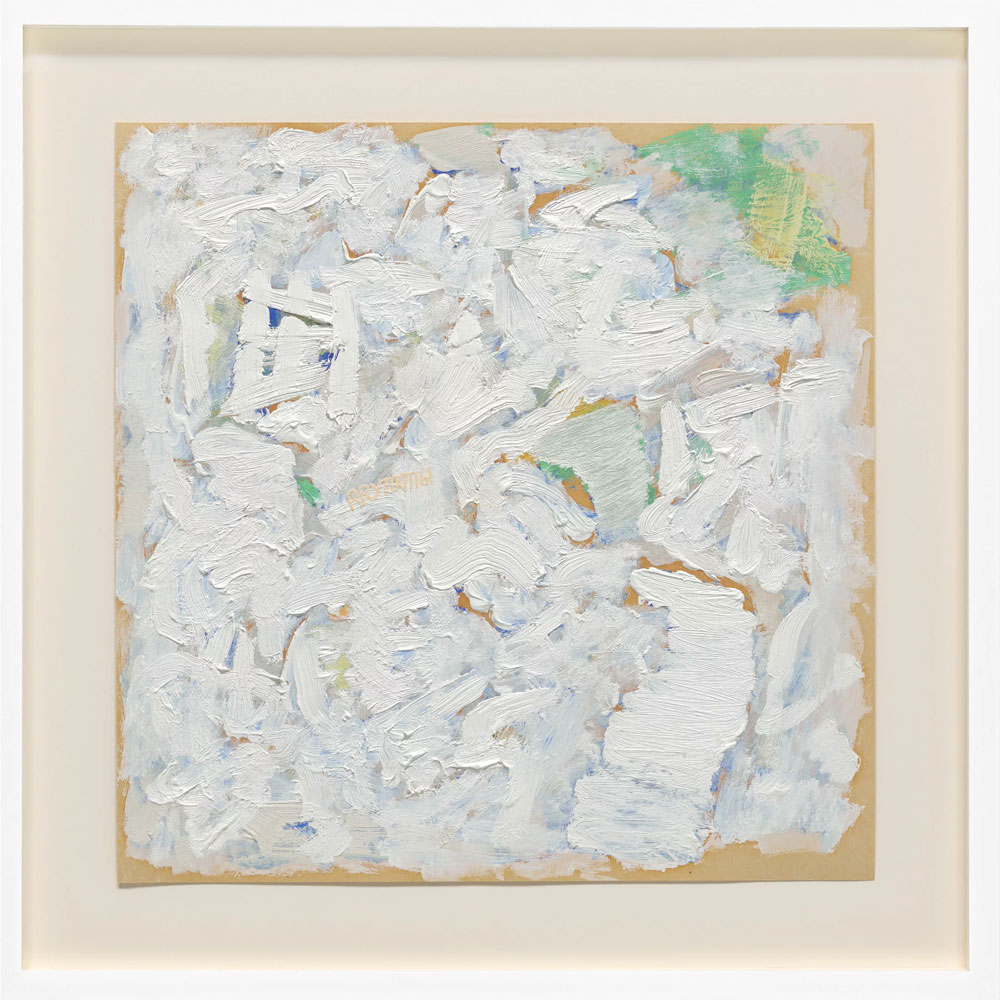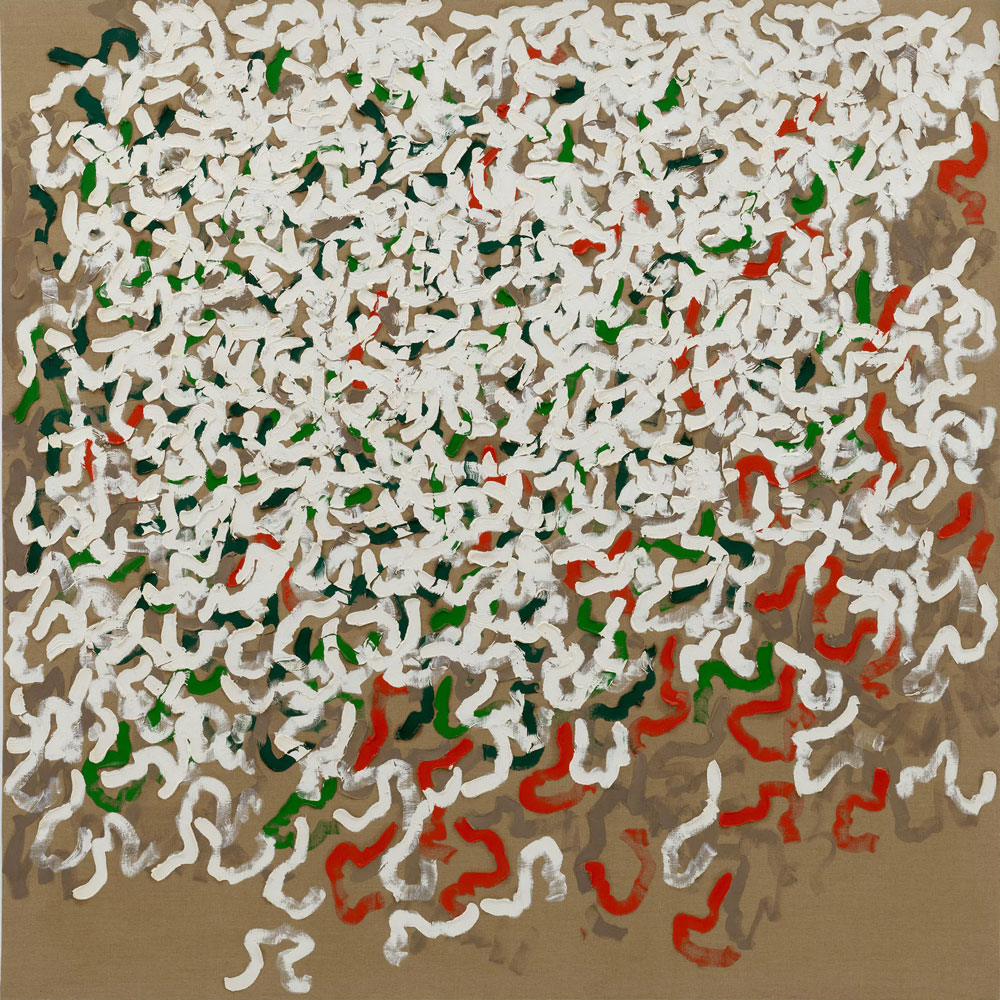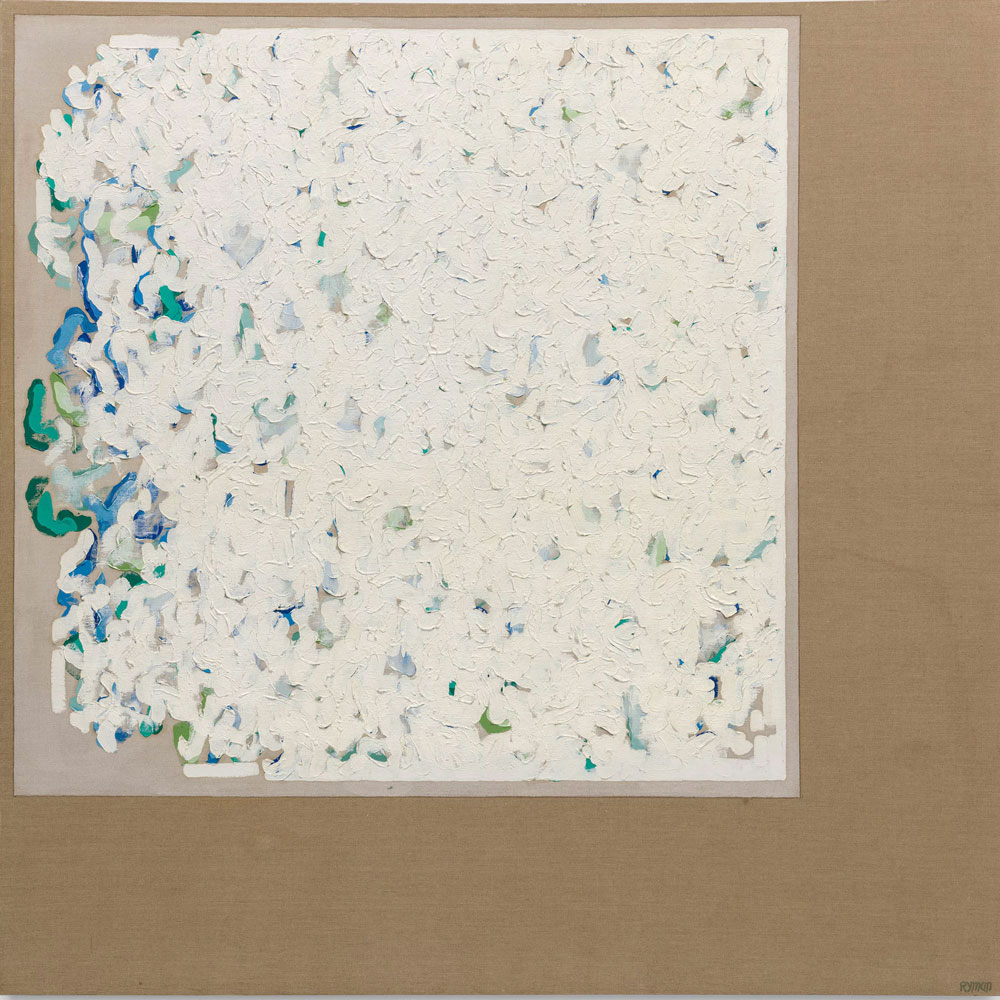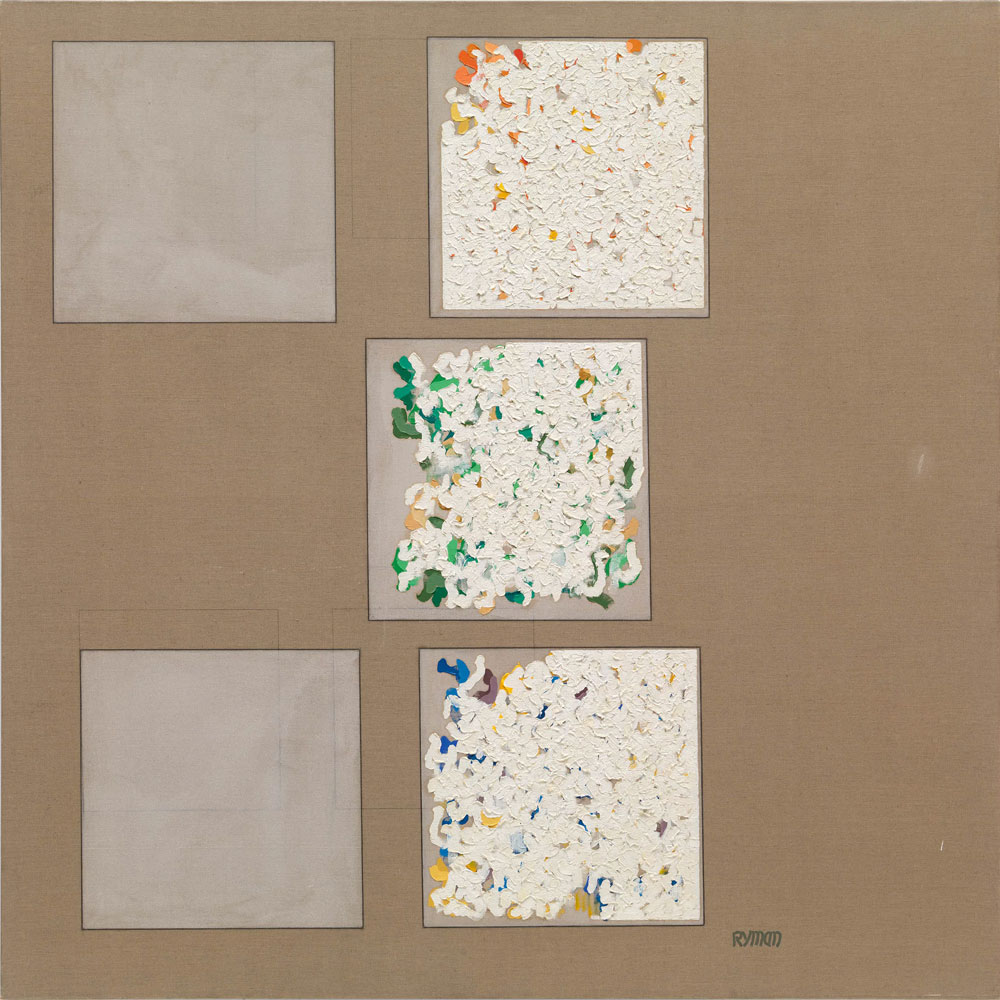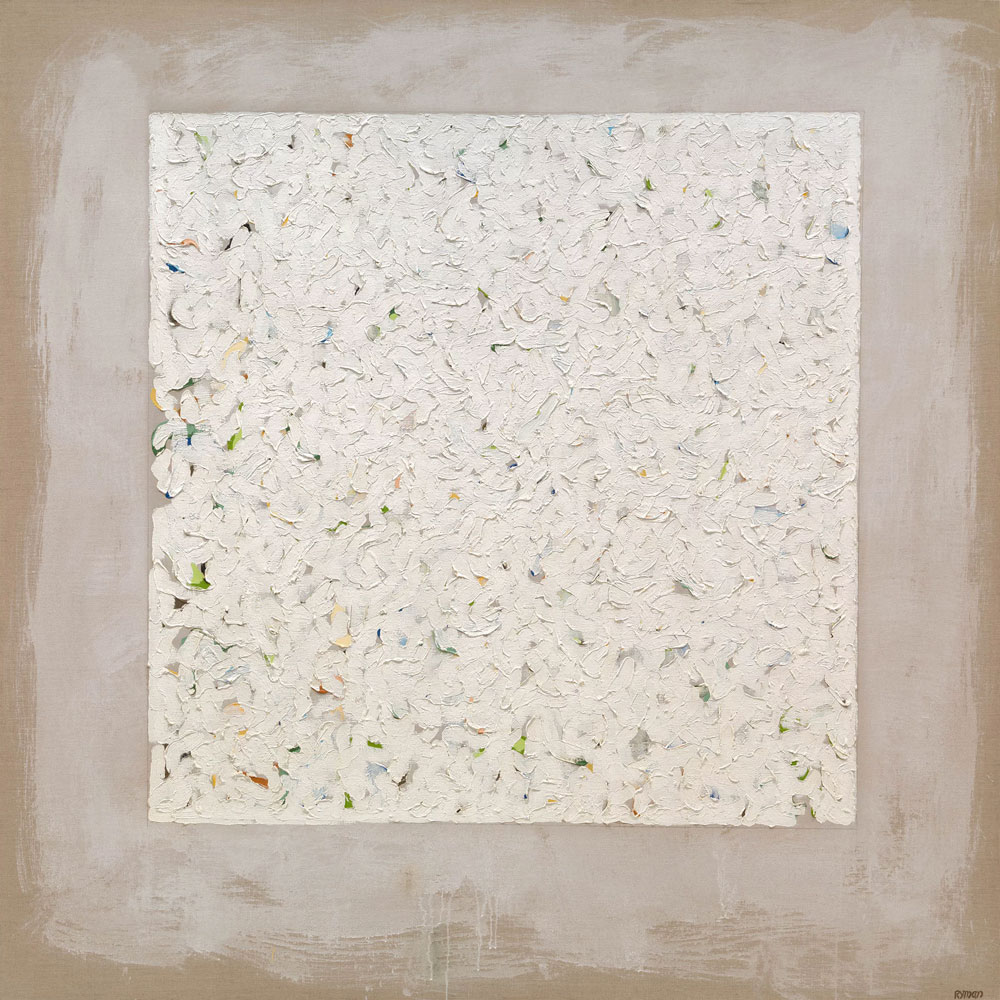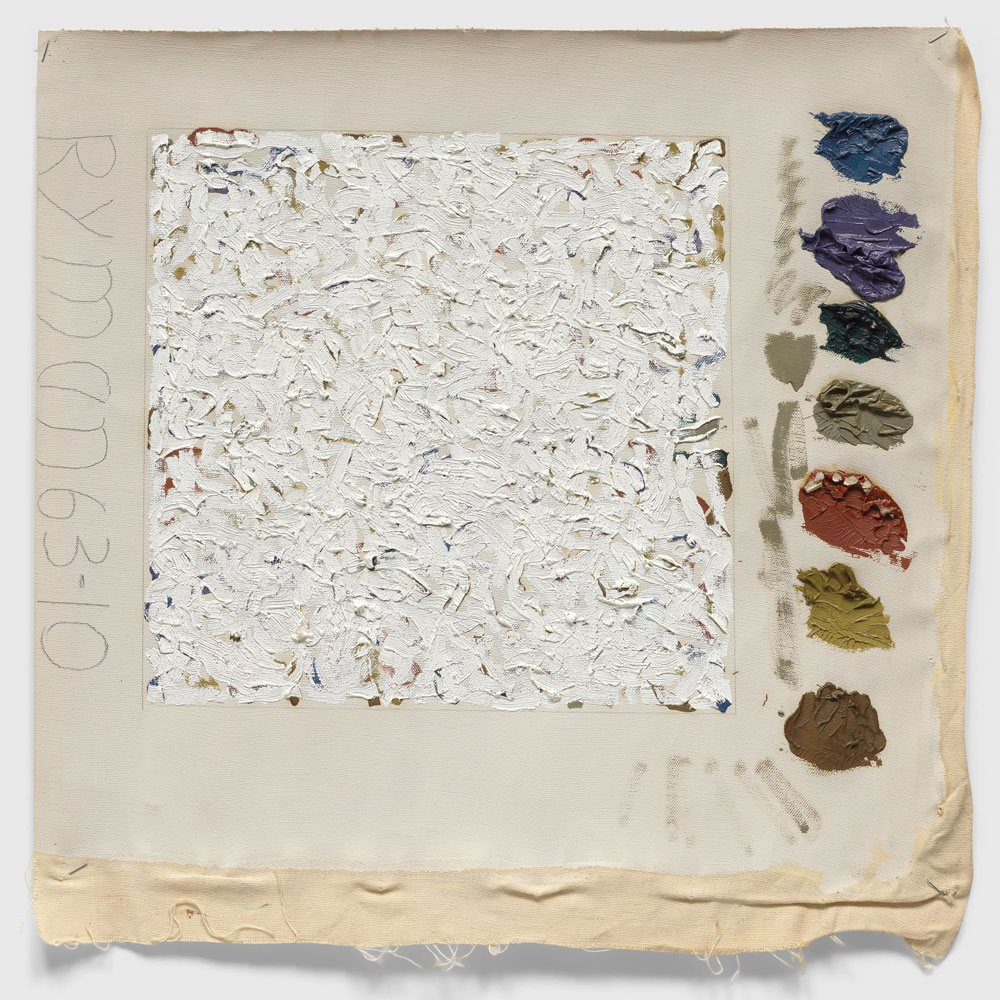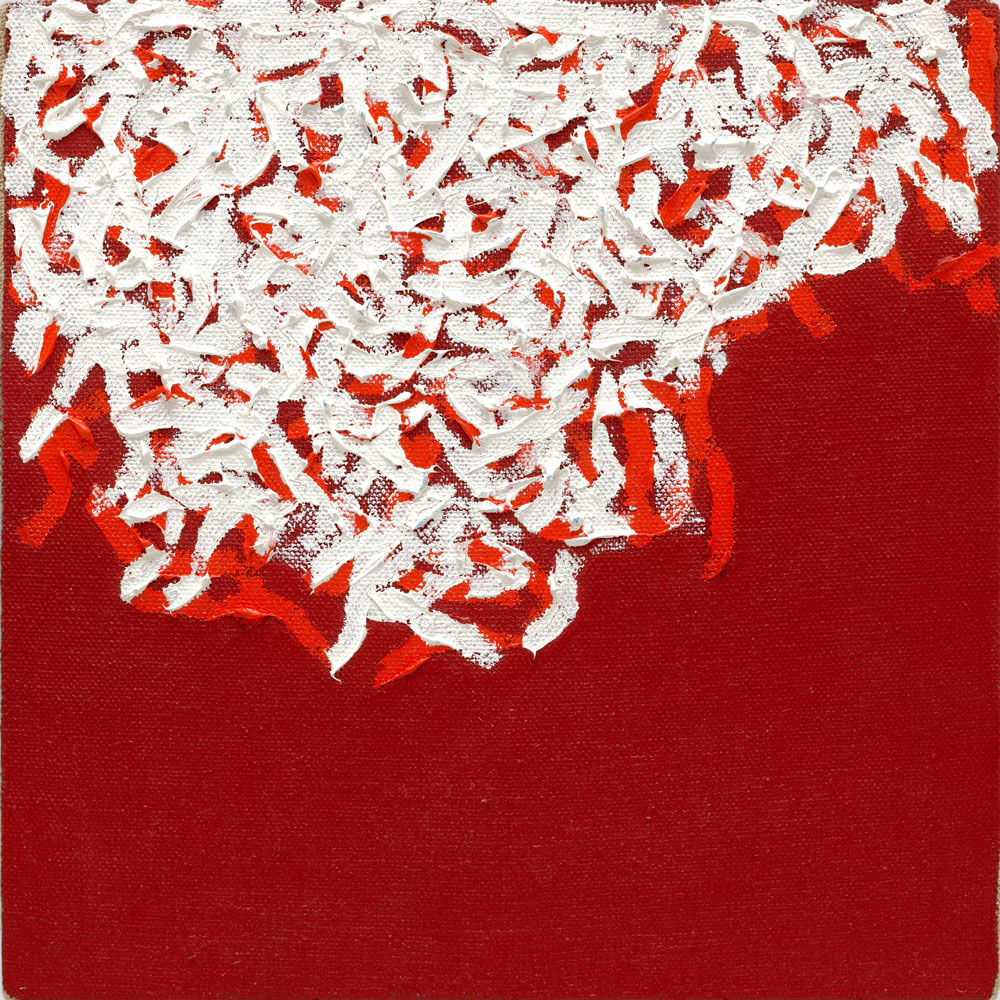PRESENTATION: Robert Ryman 1961-1964
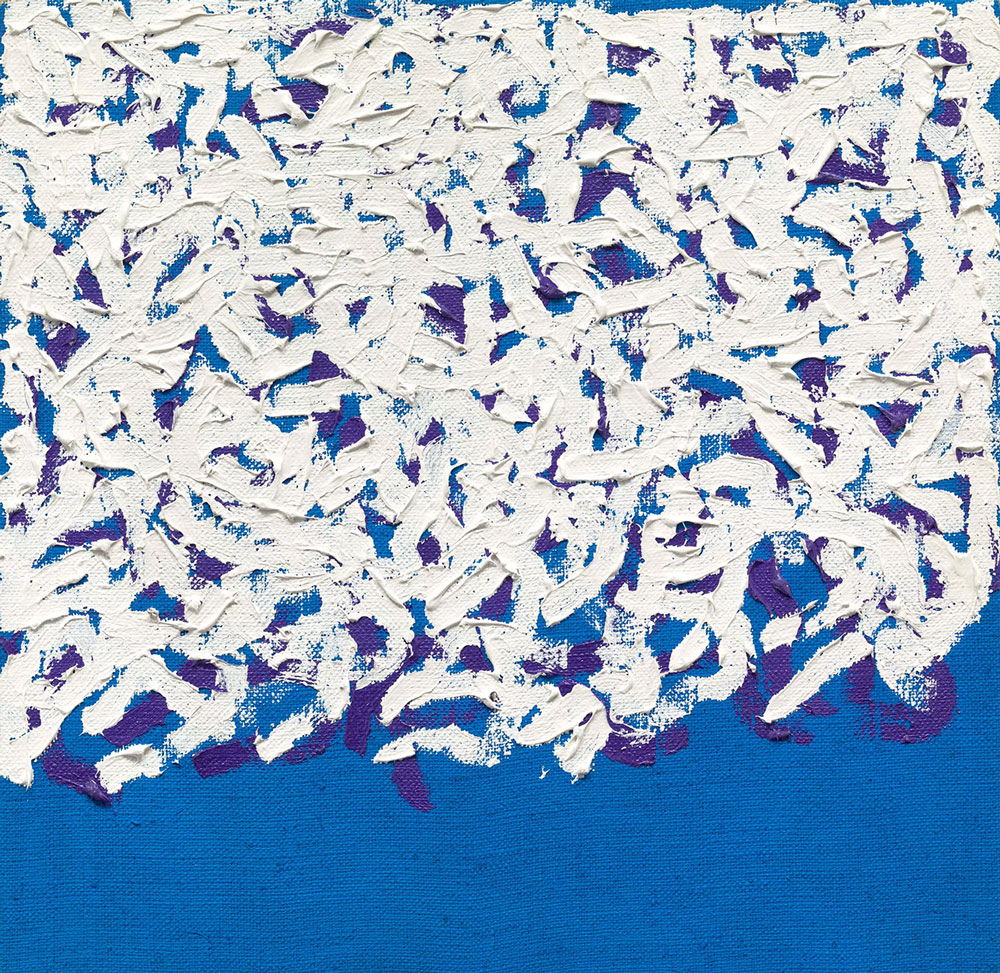 Robert Ryman is known for his tactile monochromatic works, which he executed using a range of painterly media on various supports, including paper, canvas, linen, aluminum, vinyl, and newsprint. Emerging in the 1960s, Ryman eschewed self-contained representational and abstract imagery, instead giving precedence to the physical gesture of applying paint to a support. Unlike many of the artists and movements with which he is often associated, such as abstract expressionism and minimalism (labels to which he never subscribed), Ryman neither reveled in the emotive qualities of gesturalism nor sought to eradicate the painterly mark; rather, his works are novel and sensitive explorations of the visual, material, and experiential qualities of his media that exist in a dialogue with their surroundings.
Robert Ryman is known for his tactile monochromatic works, which he executed using a range of painterly media on various supports, including paper, canvas, linen, aluminum, vinyl, and newsprint. Emerging in the 1960s, Ryman eschewed self-contained representational and abstract imagery, instead giving precedence to the physical gesture of applying paint to a support. Unlike many of the artists and movements with which he is often associated, such as abstract expressionism and minimalism (labels to which he never subscribed), Ryman neither reveled in the emotive qualities of gesturalism nor sought to eradicate the painterly mark; rather, his works are novel and sensitive explorations of the visual, material, and experiential qualities of his media that exist in a dialogue with their surroundings.
By Dimitris Lempesis
Photo: David Zwirner Gallery Archive
Composed primarily of significant loans from museums and private collections in the United States and Europe, the exhibition “Robert Ryman: 1961–1964” is one of the most extensive looks at this formative moment in the artist’s career. Ryman gained initial recognition for the work he made in the late 1960s and early 1970s. As a result, his paintings created prior to this period remain less well known to this day. Yet it was during the early 1960s that Ryman began to firmly establish the broad parameters of his radical and inventive practice. His paintings from these years reflect how, even at this early point, Ryman was already looking to interrogate and reinterpret the fundamental precepts of painting by experimenting with different supports and materials; deconstructing the relationship between frame and wall; and more broadly, investigating the visual, material, and experiential qualities that define the conditions in which a work of art is encountered. It was also at this time that the artist settled on the square as the primary format for his art and began experimenting with scale, a consequence, in part, of his move around 1961 to a studio space that afforded him the ability to work in larger formats. The exhibition includes representative works of all facets of Ryman’s painterly practice during this time, including his use of thick impasto brushstrokes on both stretched and unstretched canvas; heavily or sparsely worked paintings in both small and large formats; and a group of rarely seen works on raw linen, each featuring one or several seemingly complete, independent compositions. This expansive presentation of paintings from a critical moment in Ryman’s development will further elucidate many of the fundamental ideas that he would continue to explore throughout his prolific sixty-year career. Color is a notable throughline in these works, as it in fact was throughout Ryman’s career. Several of the paintings feature subtle suggestions of colorful underpainting that leave an outsized effect on the viewing experience, while in other works Ryman’s assertive use of green, red, and blue intensifies the visual presence of the various white tones. Many of the paintings were done on untreated canvas, and the beige and brown supports create color contrasts with the paint on their surfaces. A major 1964 painting, which has not been exhibited since the year after its creation, contains a number of square and square-like forms which seem to both protrude from and dissolve into the tan linen support. In the upper register, a solid red square is situated next to a similarly sized gray one, flanked on the other side by a field of white whose borders diffuse into increasingly loose hashes. Beneath these forms lies a self-contained square, surrounded by a strong red border, composed of Ryman’s distinctive brushwork from this time: evenly rendered and curled strokes of impasto.
Robert Ryman, (30/51930-8/2/2019) in 1948 attended Tennessee Polytechnic Institute and George Peabody College for Teachers in his native Tennessee and then served in the military for two years. In 1952 he moved to New York. Initially he had expected to become a professional jazz saxophonist, but while working as a guard in the Museum of Modern Art in New York, a job he held for seven years and became friends with Dan Flavin and Michael Venezia, both of whom were also working at Museum. In 1961 he also began to paint on a full-time basis. During the early 1960s, Ryman spent a great deal of time with other artists whose studios were on the Bowery, including Tom Doyle, Eva Hesse, Sol LeWitt, and Sylvia & Robert Mangold. At this time, Ryman began executing his first paintings on metal (vinyl polymer on aluminum), a support he would use many times again. In 1966 Ryman’s work was included in “Systemic Painting” at the Solomon R. Guggenheim Museum, New York, along with twenty-eight other artists, including Ellsworth Kelly, Jackson Pollock, and Frank Stella. The artist’s first solo exhibition took place at the Paul Bianchini Gallery, New York, in 1967. Two years later, Ryman was included in “When Attitudes Become Form”, a seminal exhibition of works by Minimalist and Conceptual artists organized by the Kunsthalle Bern. Ryman concentrated on monochromatic canvases, and, setting himself apart from the Abstract Expressionist painters, he quickly determined that the absence of color would be his central pictorial element. By restricting his palette to white, Ryman discouraged any referential color or hint of subject matter. Yet he claimed that white had no special significance, that it was “just a means of exposing other elements of the painting”. Within his self-imposed boundaries, Ryman attempted to investigate the core issues of painting—how paintings are made, how they are placed on the wall, the relationship of paint to surface, and so on. Sometimes his brushstrokes were highly visible, though often his surfaces seemed imperturbable and spare. He experimented with many supports, including canvas, aluminum, steel, paper, fibreglass, copper, and Plexiglas, and often employed a wide range of fasteners—which he considered fully a part of his works—to attach his artwork to the wall. Using this approach, he examined the interstices between art as object and art as surface.
Photo: Robert Ryman, Untitled Study, 1963, Oil on stretched linen canvas, 9 x 9 inches (22.9 x 22.9 cm), Signed and dated verso, © Estate of Robert Ryman, Courtesy Estate of Robert Ryman and David Zwirner Gallery
Info: Curator: Dieter Schwarz, David Zwirner Gallery, 537 West 20th Street, New York, NY, USA, Duration: 9/11/2023-3/2/2024, Days & Hours: Tue-Sat 10:00-18:00, www.davidzwirner.com/
